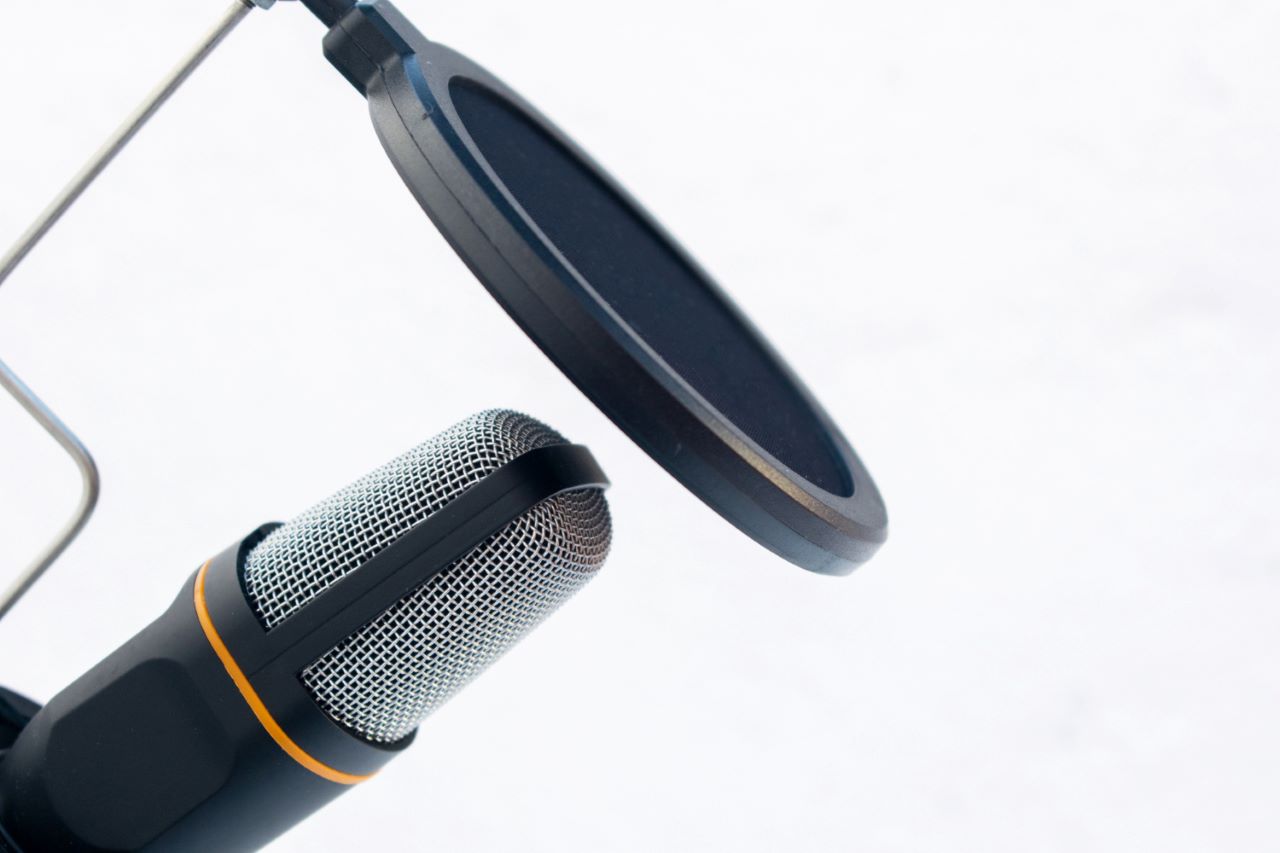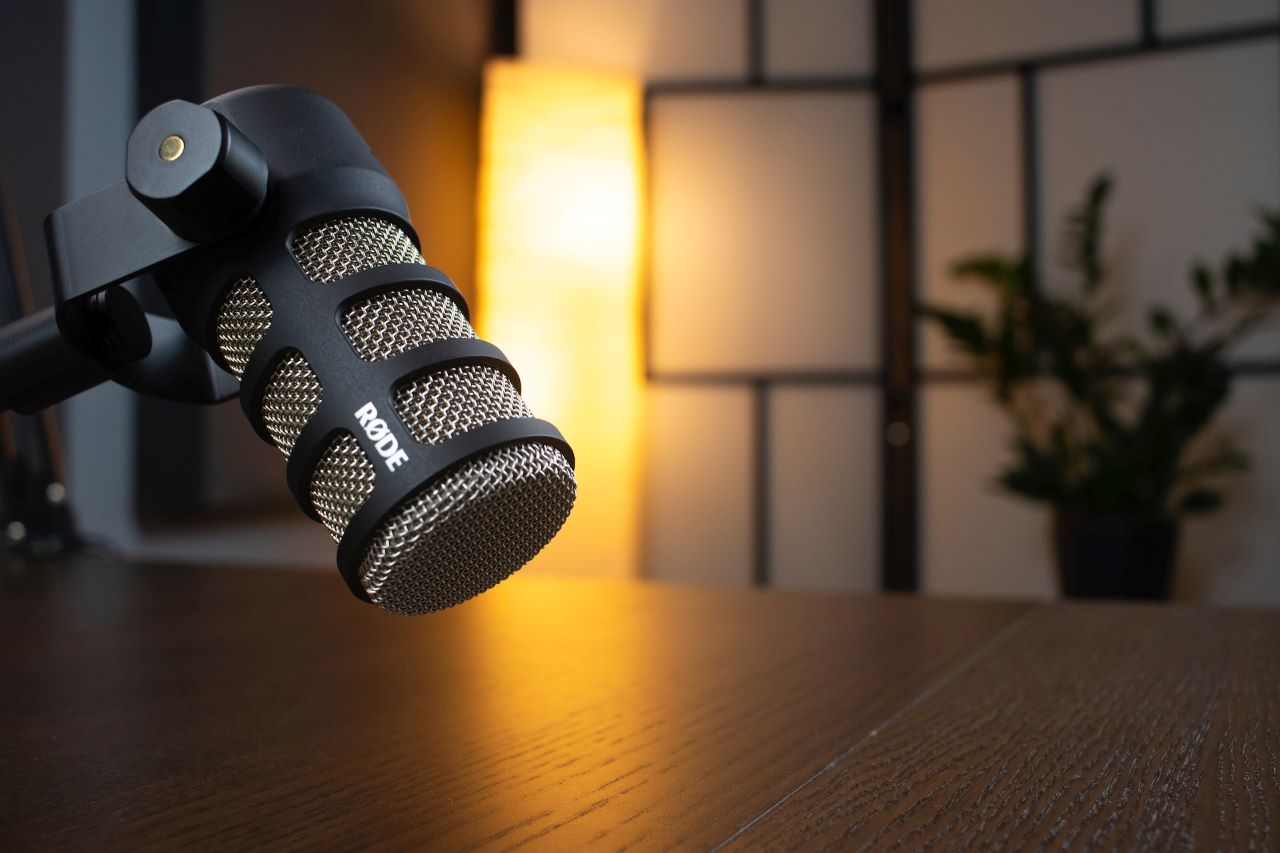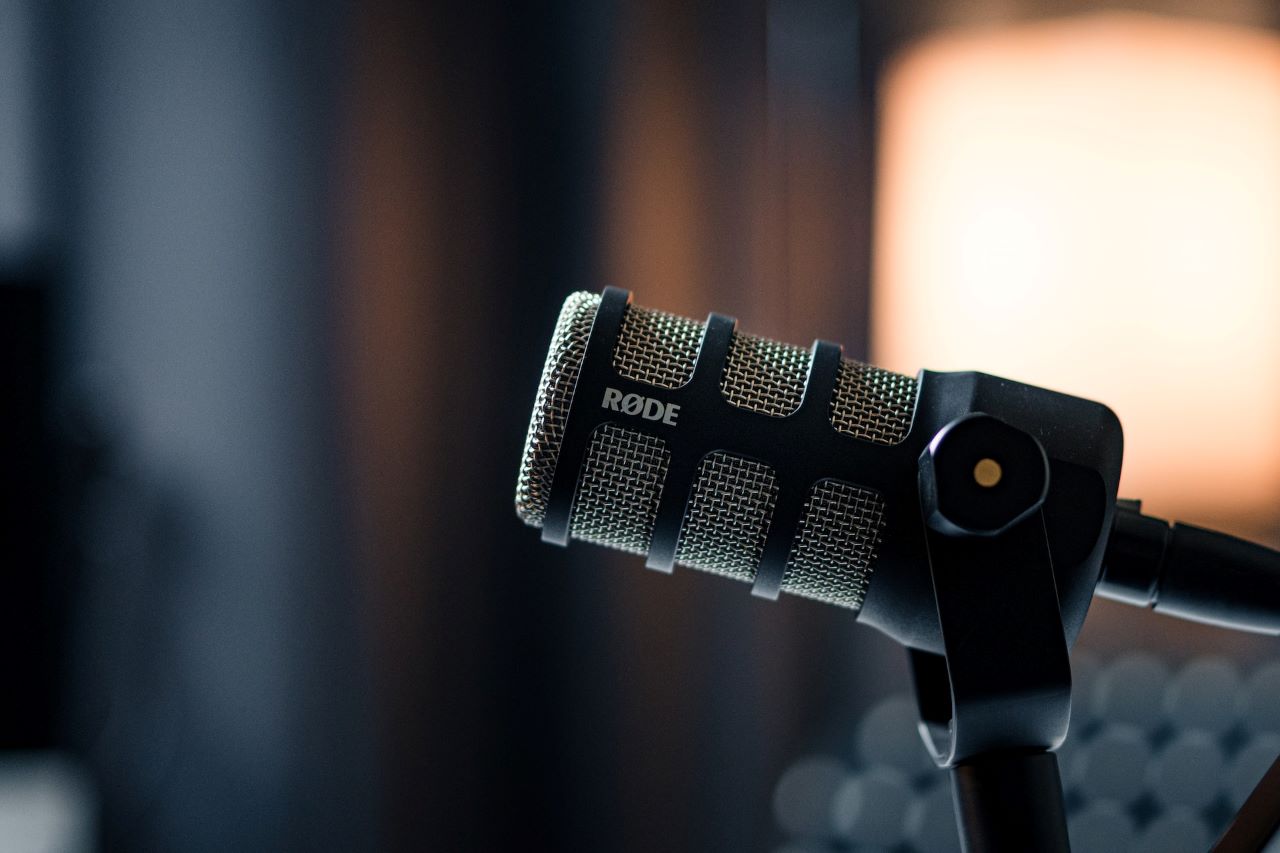Are you facing the all-too-common “silent treatment” from your condenser microphone? You’re not alone. In the world of podcast recording, condenser mics are renowned for their superior sound quality, but they can be finicky. From podcasters to musicians, many encounter moments when their trusted microphones just won’t cooperate. But why does this happen?
In this comprehensive guide, we’re going to demystify the silent dilemma of condenser microphones. Whether it’s a power hiccup, a connection conundrum, or an environmental enigma, we’ve got you covered. We’ll navigate through the most common issues and arm you with practical, easy-to-follow solutions.
By the end of this article, you’ll be well-equipped to troubleshoot your condenser mic like a pro, ensuring clear, uninterrupted audio for all your needs. Let’s turn the silence into a symphony of sound!
Related: Best Microphones For Recording in Podcasting
Contents
Why Is My Condenser Mic Not Working?
These mics are like high-performance cars: phenomenal when running smoothly but a bit complex under the hood. Common issues range from power supply problems to environmental factors. Each issue can significantly impact your recording quality or even render your mic silent. Understanding these problems is the first step toward a solution. So, let’s dive in!
Power Supply Problems

Image by Freepik
When your condenser mic goes quiet, power supply issues are often the culprits. These mics need a power source to work their magic. But when this power supply hits a snag, your mic might as well be a fancy paperweight. Let’s break down the two main power supply problems: Phantom Power Issues and Battery Problems.
Phantom Power Issues
Picture this: You’re ready to record, but your mic is silent. One common reason? Phantom power issues. Condenser mics typically require 48V phantom power supplied through an audio interface or mixer. If this power isn’t delivered correctly, your mic won’t work. Here’s what to check:
- Power Source: Ensure your audio interface or mixer is on and supplying phantom power.
- Connection: A loose or improper connection can interrupt the power supply. Double-check your connections.
- Compatibility: Some mics need specific power requirements. Make sure your setup is compatible with enough power.
Battery Problems in Mics
Not all condenser mics rely on phantom power; some use batteries. Battery issues are straightforward but often overlooked. Here’s what to do:
- Check the Battery: It seems simple, but it’s often the solution. Replace the battery if it’s dead.
- Battery Compartment: Corrosion or damage inside the battery compartment can prevent power flow. Inspect and clean if needed.
- Contact Points: Ensure the battery contacts are clean and making proper contact.
Connection And Mic Cable Issues
Think of your mic as part of a team, where every member needs to play their part. If the connections or cables fail, the whole team – or, in this case, your audio setup – falls apart. Let’s break down two common connection problems: Faulty XLR cables and connection port damage.
Faulty XLR Cables

Image by Freepik
XLR cables are the lifelines of your condenser mic. But like all cables, they can develop faults. Here’s what to look out for:
- Physical Damage: Check for cuts, kinks, or bends in the XLR input cable. These can disrupt the signal.
- Connection Points: Loose or damaged XLR connector can cause intermittent or no signal.
- Testing: Use a multimeter to test for continuity. If the cable’s broken inside, it’s time for a replacement.
Connection Port Damages
The connection ports on your microphone and audio interface are equally crucial. Damage here can cause significant issues. Pay attention to:
- Loose Ports: A loose connection port can cause signal dropouts or complete loss.
- Physical Damage: Look for any signs of wear, bent pins, or debris inside the port.
- Test with Another Cable: Sometimes, the problem is the port, not the cable. Try a different cable to diagnose the issue.
Connection and cable issues might seem daunting, but with a keen eye and a bit of troubleshooting, they can be resolved, ensuring your mic performs at its best.
Environmental Factors
Your condenser mic is sensitive, not just to sound, but to its environment too. Extreme conditions like moisture, humidity, and temperature fluctuations can impact its performance. Understanding these factors helps in maintaining the longevity and quality of your microphone.
Moisture and Humidity Effects
High humidity or exposure to moisture is a condenser mic’s nemesis. Moisture can cause short-circuiting or corrode internal components, leading to quality degradation or failure. Here’s what to keep in mind:
- Avoid Damp Environments: Store and use your mic in a dry place.
- Use a Dehumidifier: In humid regions, a dehumidifier can help protect your equipment.
- Check for Condensation: Especially in changing temperatures, condensation can form inside the mic. Let it acclimate to room temperature before use.
Temperature Fluctuations
Condenser mics don’t enjoy extreme temperatures. Both hot and cold can affect their components, especially the delicate diaphragm. Tips to manage this include:
- Stable Temperature: Store and use your mic in a room with a consistent temperature.
- Avoid Direct Sunlight: Prolonged exposure to sunlight can heat the mic, damaging its internals.
- Gradual Acclimation: If moving the mic between different temperatures, give it time to adjust gradually.
By understanding and managing these environmental factors, you can ensure that your condenser mic remains a reliable and high-quality tool in your audio arsenal.
Technical Glitches And Their Resolutions
When your condenser mic stops working, technical glitches often lurk behind the scenes. These issues can range from internal component failures to driver and software conflicts. This section is your go-to resource for identifying and resolving these technical troubles. We’ll break down the complexities into manageable insights, helping you restore your mic’s functionality.
Internal Component Failures
At the heart of your condenser mic are intricate components that, when failing, can lead to significant performance issues. Here, we’ll explore five key internal failures and how to address them.
Diaphragm Damage
The diaphragm, a thin membrane, is crucial for converting sound waves into electrical signals. Damage can occur from exposure to moisture, excessive sound pressure, or physical impact, resulting in audio distortion or loss of sensitivity.
To address this, inspect the diaphragm for visible damage. If damaged, professional repair or replacement is essential. Regularly check for debris and avoid exposing the mic to extreme sound levels to prevent future damage.
Circuitry Issues
Your condenser mic’s circuitry is a complex network of resistors, capacitors, and other electronic components. Issues like loose connections, short circuits, or component failure can disrupt audio quality. Identifying these issues often requires electrical testing tools like a multimeter.
Repairs might involve re-soldering connections or replacing damaged components, usually necessitating professional skills and equipment.
Capacitor Wear
Capacitors in your mic influence its sound quality and response. Over time, they can degrade, leading to a loss in audio fidelity or microphone volume. This degradation often manifests as a change in the mic’s frequency response or increased noise.
Capacitors should be inspected for bulging or leakage and replaced by a technician if necessary. Using the mic in a controlled environment can extend the lifespan of these components.
Solder Joint Failures
Solder joints hold together the various electronic components within your mic. These can fail due to age, poor initial soldering, or physical stress. Symptoms include intermittent audio dropouts or complete loss of function.
A detailed inspection under magnification can reveal cracked or broken joints. Repairing these involves precise re-soldering, a task for skilled technicians to avoid further damage.
Transformer Issues
Transformers in mics are used for balanced output and impedance matching. Problems like coil damage or internal short circuits can result in audio distortion or low output levels. Diagnosing transformer issues involves electrical testing for continuity and resistance.
Repairs or replacements are complex and should be handled by professionals, ensuring the transformer’s specifications match the mic’s requirements.
Driver And Software Conflicts

Image by wirestock on Freepik
Your computer’s drivers and software play a crucial role in your mic’s functionality. Conflicts here can lead to a range of issues. We’ll cover five critical driver and software conflicts and how to resolve them.
Incompatible Audio Drivers
Drivers enable your computer to communicate with the microphone. Incompatibility or outdated drivers can cause non-recognition or poor audio quality. To resolve this, check for the latest driver updates from the manufacturer’s website.
Installation should be followed by a system reboot. Regularly updating your drivers ensures compatibility, especially after major operating system updates.
Firmware Updates and Fixes
Firmware, the embedded software in your mic, can become outdated or corrupt. Out-of-date firmware may lead to compatibility issues or reduced functionality. Regularly check the manufacturer’s website for firmware updates and follow their instructions for installation. A firmware update can resolve various issues and sometimes even enhance the mic’s capabilities.
DAW Compatibility Issues
Compatibility between your Digital Audio Workstation (DAW) and microphone is crucial for optimal recording quality. Issues can arise when the DAW software is not up-to-date or not properly configured for your mic.
Ensure that both your DAW and mic drivers are current. If problems persist, consulting online forums or the DAW’s support team can provide model-specific solutions.
Operating System Conflicts
Operating system updates can sometimes disrupt the functionality of your microphone. These conflicts may manifest as driver incompatibility or altered system settings affecting audio input. If issues arise post-update, try rolling back to previous driver versions or reconfiguring your system settings. Keeping a backup of your drivers and settings can be useful for quick restoration.
USB Interface Glitches
USB condenser mics might face recognition issues or audio interference due to USB interface problems. This can be caused by faulty USB port, driver conflicts, or electromagnetic interference from other devices. Troubleshooting steps include trying different USB ports, updating USB controller drivers, minimizing interference by using shielded cables and avoiding USB hub overloads.
Step-By-Step Troubleshooting Guide

Photo by dlxmedia.hu on Unsplash
When your condenser mic stops working, it can be a source of significant frustration. But fear not, as we’re here to guide you through a systematic troubleshooting process. This step-by-step guide is designed to help you identify and fix the most common issues with your microphone.
Step One: Check The Power Source
Power is the lifeline of your condenser microphone. Start by ensuring that your microphone is receiving the power it needs. If it’s a phantom-powered mic, check your audio interface or mixer. Is the phantom power switch on? Sometimes, this switch can be accidentally turned off or not properly engaged.
For battery-powered mics, it’s crucial to check the battery’s life. Even if you recently replaced the battery, it could be defective or incorrectly inserted. Verify the battery’s orientation and try a fresh one. It’s good practice to keep spare batteries handy, especially during important sessions.
In case of external power supplies, ensure that the supply is correctly plugged in and functioning. A quick test with another device can confirm whether the power supply is working.
Step Two: Inspect The Cables And Connections
Cables are often the unsung heroes in your audio setup. Start by visually inspecting your XLR cable for any external damage. Look for signs of wear, such as fraying or bending near the connectors. Even small damages can cause big problems.
Connections are just as important. Ensure that the cable is securely connected to both the microphone and the audio interface or mixer. A loose connection can result in a weak or absent signal. Wiggle the connectors gently to check for intermittent issues.
If possible, swap the cable with another one you know works well. This is a quick way to determine if the issue lies with the cable. Remember, quality cables are an investment in the longevity and reliability of your setup.
Step Three: Test On A Different Device
Isolating the problem is key. Connect your microphone to a different audio interface, mixer, or computer. This helps determine if the issue is with the microphone or the original device. Check for compatibility with the new device. Some microphones may have specific requirements that not all devices can meet. Refer to your microphone’s manual for any particular specifications.
Observe any changes in performance on the different devices. Does the issue persist, or does the microphone work fine? This step can significantly narrow down the root cause of your problem.
Step Four: Examine Environmental Factors
Your recording environment plays a crucial role. High humidity or extreme temperatures can affect the performance of your microphone. Check the room’s humidity level; if it’s too high, consider using a dehumidifier.
Avoid direct exposure to sunlight or heat sources. This can prevent damage from overheating. Similarly, in colder environments, give your microphone time to acclimate to room temperature before using it. Physical shocks and vibrations can also affect your mic. Ensure it’s mounted securely and in a place where it’s not prone to being knocked over or jostled.
Step Five: Check for Software and Driver Issues

Photo by dlxmedia.hu on Unsplash
Software and drivers need to be in harmony with your microphone. Start by checking if your audio drivers are up to date. Visit the manufacturer’s website for the latest driver versions. Installation of new drivers should be followed by a system reboot.
If you’ve recently updated your computer’s OS, check for compatibility with your microphone. Sometimes, new OS versions can introduce issues that weren’t present in earlier versions. If problems started after an update, consider rolling back to a previous driver version.
Configuring your audio software correctly is also crucial. Ensure that your DAW or recording software recognizes the microphone and is set up to use it correctly. Misconfigured software can lead to a variety of issues, from low audio levels to complete non-recognition of the mic.
Step Six: Perform a Visual Inspection of Internal Components
If you’re technically inclined and your mic is out of warranty, consider a visual inspection of its internal components. Open the microphone carefully, ensuring you don’t lose any small parts or screws. Look for obvious signs of damage, such as loose wires, corroded contacts, or burnt components. A magnifying glass can help inspect solder joints and connections.
Be mindful of static electricity – it can damage sensitive microphone components. It’s advisable to use an anti-static wrist strap or work on an anti-static mat. If you find damage that you’re not comfortable repairing, consult a professional.
Step Seven: Consult the Manufacturer’s Support
When all else fails, turn to the experts. Contact the manufacturer’s support team for guidance. Be prepared with details about your microphone model, the issues you’re facing, and the steps you’ve already taken.
If your microphone is still under warranty, discuss the possibility of a repair or replacement. Even out of warranty, many manufacturers offer repair services or can recommend authorized service centers. Keep a record of your communication with the manufacturer’s support. This can be helpful if you need to reference it in future communications or for warranty purposes.
Conclusion
In summary, our guide has navigated through the complexities of condenser microphone troubleshooting, addressing various issues, from phantom power supply problems to environmental factors. We’ve explored technical glitches like internal component failures and driver/software conflicts. Each section provided practical insights and solutions, culminating in a detailed, step-by-step troubleshooting guide.
This comprehensive overview equips you with the knowledge and skills to effectively diagnose and resolve microphone issues, ensuring optimal performance and clear audio quality. Armed with this information, you’re now ready to tackle any microphone challenge with confidence.
